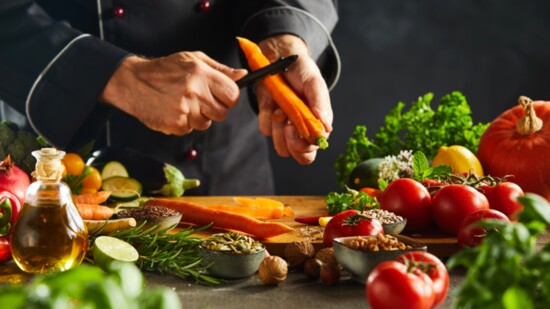As spring fades into summer, there's nothing quite like the call of the grill to get a guy excited about cooking outdoors. While I usually dominate the kitchen with my stove and oven creations, summer beckons a different kind of culinary challenge—the smoker. Today, we're diving into the art of smoking a ribeye, a process that transforms a great cut of meat into something extraordinary.
Sourcing the Perfect Ribeye
Before we get into the nitty-gritty of smoking, let's talk about the star of the show: the ribeye. For top-notch quality, I always go local. In my neck of the woods, Dry Lakes Ranch Beef out of Parowan, Utah, is the go-to spot. Not only do they offer premium cuts, but I’ve also built a great friendship with the owners over the years. When I reached out to Kay Benson, the owner, she enthusiastically provided me with a beautiful 2-pound ribeye for this smoking session.
The Art of Smoking
Smoking meat is a craft that requires patience and precision—it's not just about throwing meat on a grill. The key is to finesse the smoke and take your time. Here's how I do it:
-
Choose Your Fuel: I start with hickory chunk briquettes. These chunks were wood before they became briquettes, so you're getting an authentic smoky flavor from the start.
-
Temperature Control: I aim to keep the smoker between 225‒300 degrees Fahrenheit, with lower temperatures being preferable for a slow, even cook. Once the temperature is steady, I add applewood pieces for a touch of sweetness.
-
The Right Smoke: It's crucial to wait for the "dirty smoke" to clear. Initially, the smoke will be white and thick—not ideal. You want it to transition to a blueish, almost clear smoke. This cleaner smoke is packed with flavor without the bitterness.
Preparing the Ribeye
-
Room Temperature: Let the ribeye sit out for about an hour to reach room temperature.
-
Seasoning: I mix gourmet mustard, freshly ground pepper, salt, garlic and a pinch of fine-ground brown sugar to create a flavorful paste. This blend gets massaged into the ribeye, ensuring a robust coating.
-
Placement and Patience: Place the ribeye on the grill as far from the heat source as possible to ensure a slow, even cook. For the first two hours, let it soak in that smoke.
-
Gradual Heat Increase: As the smoking process continues, I gradually move the steak closer to the heat source, usually around the three-hour mark. Wrapping it in aluminum foil at this point helps retain moisture.
The Final Stretch
One of the beauties of smoking is the flexibility in cooking time. Depending on how tender you want your meat, you can let it go for several hours. For my ribeye, I prefer a steak-like consistency, so I pulled it off after about eight hours. By then, the meat is succulent, bursting with smoky flavor, yet still holds that satisfying ribeye texture.
Smoking a ribeye is more than just cooking; it's an experience. It’s about taking your time, enjoying the process and savoring the flavors. As summer approaches, grab your smoker and treat yourself to a culinary adventure.
